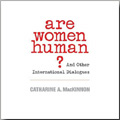 The results of the latest Quinnipiac University Poll (with emphasis):
The results of the latest Quinnipiac University Poll (with emphasis):
New York Sen. Hillary Clinton holds a 50 - 41 percent lead over Illinois Sen. Barack Obama among likely Pennsylvania Democratic primary voters and runs better against Arizona Sen. John McCain, the likely Republican nominee in Pennsylvania, Florida and Ohio, according to a Quinnipiac University poll released today.
This compares to a 53 - 41 percent lead in a March 18 survey by the independent Quinnipiac (KWIN-uh-pe-ack) University. In general election match ups of the three largest and most important swing states in the Electoral College, the survey finds.
Florida: Clinton 44 percent - McCain 42 percent; McCain beats Obama 46 - 37 percent;
Ohio: Clinton beats McCain 48 - 39 percent; Obama gets 43 percent to McCain's 42 percent;
Pennsylvania: Clinton tops McCain 48 - 40 percent; Obama leads McCain 43 - 39 percent.
The primary vote between Obama and Clinton splits sharply along racial lines, with her advantage coming from stronger support in every contest from white voters. For example, Clinton leads 59 - 34 percent among white Pennsylvania likely primary voters, while Obama leads 73 - 11 percent among black Democrats.
"When it comes to November, Sen. Hillary Clinton's strength is a big edge over Sen. Barack Obama among white voters, who have not given a majority of their votes to a Democratic presidential nominee since Lyndon Johnson in 1964," said Peter A. Brown, assistant director of the Quinnipiac University Polling Institute."
More than a third of voters in the three states think Obama's race is an advantage, more than twice the number who think it is a disadvantage. By contrast, roughly a quarter of voters say Clinton's gender is an advantage, and about the same number think it is a disadvantage.
"Former Democratic vice presidential nominee Geraldine Ferraro's assertion that Obama's race has helped his candidacy finds some support among the electorate," said Brown.
"At least for now, Sen. Clinton's argument that she is the better general election candidate in these key battleground states appears to have some validity," said Brown. "In this survey, her strength among white voters is why she runs better against Sen. McCain than does Sen. Obama.
"Roughly one in five Democrats in the three states say they will vote for McCain against Obama, but less than 10 percent say they would vote for McCain over Clinton. Among white Democrats, 23 percent defect to McCain in a matchup with Obama, but only 11 percent defect when Clinton is the Democratic candidate." Pennsylvania
Among Pennsylvania Democrats, Clinton leads 54 - 37 percent with women, and ties Obama 46 - 46 percent with men. Obama leads 51 - 42 percent among voters under 45 years old, while Clinton leads 54 - 37 percent among voters over 45.
By a 48 - 42 percent margin, Pennsylvania registered voters have a favorable opinion of Clinton. Obama gets a 49 - 31 percent favorability and McCain gets 47 - 31 percent.
"Sen. Clinton's imaginary snipers, Rev. Wright, Geraldine Ferraro, these events have taken only a small toll on Sen. Clinton's lead in the Pennsylvania Democratic primary," said Clay F. Richards, assistant director of the Quinnipiac University Polling Institute.
"Her strength is her clear advantage among white voters - blue collar whites, less educated whites, economically hurting whites, that group known famously as Reagan Democrats in the Keystone State. Obama is marshalling all his forces, but despite his eloquent dialogue on the race issue, Pennsylvania Democrats are unmoved. So Far."
The economy is the most important issue in their vote, 46 percent of voters say, followed by 23 percent who list the war in Iraq and 14 percent who cite health care.
Looking at the most important quality in a candidate, 30 percent want a strong leader and 26 percent want someone who is trustworthy.
Being black is an advantage for Obama, 32 percent say, while 15 percent say it's a disadvantage and 47 percent say it makes no difference.
Being a woman is an advantage for Clinton, 26 percent say, with 25 percent saying it's a disadvantage and 45 percent saying it makes no difference.
For further details, click the link to the full analysis.























|